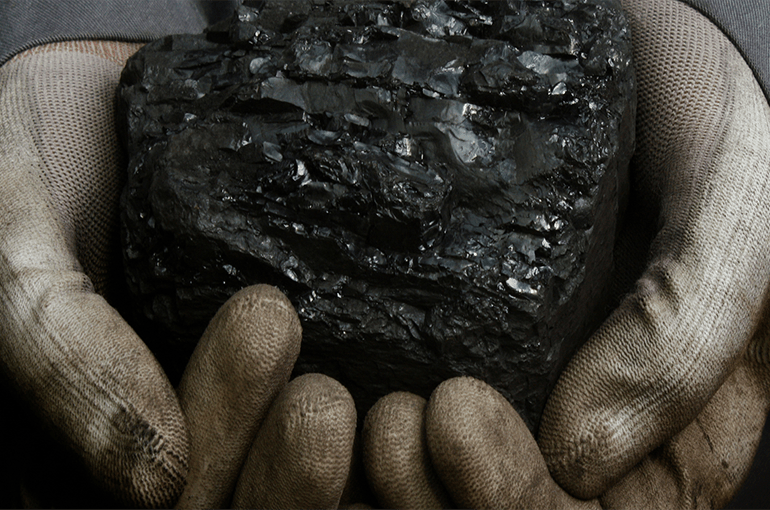
We closed 2015 in a year in which coal was a major player in Spain’s power generation, amounting for the 20.3% of the energy produced in the Peninsula (closely following nuclear power at 21.9%).

Evolution of coal in the Spanish energy mix. Source: El País.
The reason for the importance of coal during this period was the fall in wind production (5.7% compared to the previous year) and the collapse of hydro generation (more than 28% compared to 2014). But the gap left by hydraulic generation could have been covered by another technology with enough capacity to do so: the combined cycle fuelled with natural gas that emits less than half of greenhouse gases when producing electricity.
However, it was not. The increase in the use of coal in Spain in 2015 coincided with the end of the incentives that the State granted to the thermal power plants to burn national coal and thus support Spanish mining. A conjuncture taken advantage of by the electric companies to maximize their facilities.

Evolution of API2 coal in $/ton. Source: Own-elaboration via M·Tech
The pricing environment of international markets helped to promote its consumption. The entrance of American shale gas increased the exports of its coal to the European continent, accentuated by the slowing of the consumption of this fuel by the Asian markets.
On the other hand, a greater generation of power with coal supposes an increase in the emissions of greenhouse gases by our generation mix. This effect is contrary to the objectives established at international level to contain the environmental impact of the activity in our country. However, our energy policy is to comply with the Kyoto protocols and respect the agreements of COP 21 (Paris) to maintain the global temperature through commitments to emit less greenhouse gases.
Spain committed to limit its emissions increase to a maximum of 15% in relation to 1990 levels. But it is the member country that has the least chances of complying with the agreement. The increase of its emissions in relation to 1990 during the last years has been constant:

Progression of emissions in Spain over the years: Own-elaboration.
The economic boom at the beginning of the 20th century and a reactivation of electricity generation through coal, led us to surpass that ceiling in 2007 by almost 50%. As of 2008, two clear factors such as the deep financial crisis of 2008 and the purchase of almost 800 million euros in emission rights caused a correction of the trend towards the actual fulfilment of the objectives.
The Executive Plan of the current President, Mariano Rajoy, does not establish a clear predisposition to give that fossil fuel up. For the moment, it has been the market itself that has encouraged its consumption through the mechanisms of competitiveness compared to other sources of generation cleaner.
Likewise, there is already a clear horizon regarding the exploitation of indigenous coal. As stipulated in the “Action Framework for coal mining and mining basins in the period 2013-2018”, a maximum period is established until December 31, 2018 so that all those units of coal production That are not competitive without receiving aid are closed.
The fulfilment of this agreement has been a debate of the different governments for the clear implications that it has for the society. What was a catalyst of the Industrial Revolution in Spain has posed a threat to climate change and the need to redefine its gap in the mix against new sources of electricity generation. The reconversion of the mining sector of Spain still does not give a satisfactory solution to the almost 3,000 miners who still live in this sector.
For the above, the future of coal is still in the air. In short:
- For now, the mining sector is dependent on the State, receiving more than 25 million euros to cover losses caused by its production (subsidies, which will end in 2018).
- It continues to be a highly competitive source of electricity and ready to cover the thermal gap that will be provided by renewable generation.
- It is the largest source of polluting energy on the planet. However, investment in research and development is paying off and plants are being developed with CO2 recovery. The new US energy plan establishes the launch of new, more efficient plants. The capture and confinement of CO2 seems to be the solution to the problem, but there are still less problematic alternatives.
- National coal provides acquisition prices above international prices, so it is more beneficial to import than to acquire our raw material. This will mean the disappearance of mining in Spain, but certainly not the generation of electricity through coal burning.
It seems logical to point out, for all the reasons described, that a deep debate about the Spanish electricity system is necessary, considering the different sources of generation, the CO2 emissions we can commit to, what will be the efforts to contain the growth of The demand, etc.
In any case, it will be necessary to have coal as a source of generation, both for security of electrical supply in a wide scheme of environmental conditions, and to support the non-programmable operation of renewable energy. The issue is to set a range of power needed to ensure the stability of the network, as well as another predictable annual operation, to minimize CO2 emissions as much as possible.
What remains clear is that coal will continue to play a major role in the world of energy, probably supported by large investments in research and mitigation of its footprint.
Adrian Gil | Energy Consultant
If you found it interesting, please share it!
Recent Articles




































